Manipulating the brain’s ‘gatekeepers’ could thwart obesity and prevent dementia
Dr Vincent Prevot is a neuroendocrinologist based at the Inserm in Lille, France. He collaborates with Professor Markus Schwaninger and Dr Ruben Nogueiras on the WATCH project, which could help prevent, stall or reverse age-related diseases
TALK LIKE A NEUROENDOCRINOLOGIST
DEMENTIA – a syndrome that affects memory, language, problem-solving and other thinking abilities severely enough to interfere with daily life
HYPOTHALAMUS – a small region of the brain located at the base, near the pituitary gland. It plays a crucial role in many important functions, such as releasing hormones and regulating body temperature
LEPTIN – a protein made in the fat cells, which circulates in the bloodstream and goes to the brain
MEDIAN EMINENCE – a small swelling on the underside of the hypothalamus that gives rise to the pituitary stalk
METABOLISM – all the chemical processes that go on continuously inside your body to keep you alive and your organs functioning normally, such as breathing, repairing cells and digesting food
TANYCYTES – specialised cells with long processes that are found along the walls of the third and fourth ventricles of the brain
There is an adage that states we know more about the Universe than we do the human brain and, while that is not strictly true (it has to be understood in context), it is perhaps fair to say that relative to the opportunity for discoveries in the future, we do know much more about the Universe than we do our own minds!
Fortunately, some of the very best minds are engaged in the Well-Aging and the Tanycytic Control of Health (WATCH) project. The project sees a collaboration between Dr Vincent Prevot, a neuroendocrinologist based at the Inserm in Lille in France, Professor Markus Schwaninger, a neurologist at the University of Lübeck in Germany, and Dr Ruben Nogueiras, an expert in molecular metabolism at the University of Santiago de Compostela in Spain. The team wants to understand more about the role that peripheral hormones play in proper brain functioning, and how a lack of communication between the brain and the periphery may lead to cognitive decline in adulthood. The WATCH project is focusing on tanycytes, cells found in certain areas of the brain.
TANYCYTE TRAITS
Tanycytes, a type of nerve cell known as glia, line the walls of the third ventricle in the hypothalamus. Some tanycytes still divide in the adult brain, giving rise to new neurons, a phenomenon that only occurs in two or three other brain regions. They also have several other fascinating and unique features. In particular, tanycytes of the hypothalamic median eminence have a special advantage – they dip their ‘end-feet’ (the expanded tips of their processes) directly into the blood circulation, since the capillaries underlying this region have fenestrations or ‘windows’ in their walls. This sets them apart from capillaries in most other parts of the brain, which have leak-proof walls to separate brain cells from circulating molecules, constituting a ‘blood-brain barrier’. “The fact that the tanycytes in this region contact both the blood and, at their other end, the ventricular liquid or ‘cerebrospinal fluid’, which constitutes a kind of canal system connecting different parts of the brain, is why they are part of our focus,” explains Vincent. “It means that they are peculiarly qualified to sense what is going on in the rest of the body, and to allow messages from other tissues to bypass the blood-brain barrier and, thus, gain access to brain circuits.”
DISCOVERIES
Through experiments in animal models over the last few years, the team has shown that tanycytes are not passive bridges between the two liquids but play a handful of very active and peculiar roles. Firstly, tanycytic end-feet, by alternately advancing and retreating, participate in a complex ‘dance’ with the terminals of hypothalamic neurons, which need to get close enough to the fenestrated capillaries during certain periods to secrete their hormonal signals into the blood circulation. Secondly, although tanycytes replace the blood-brain barrier by forming another barrier at the ventricular wall, this layer, made up of their cell bodies, is more or less tightly sealed depending on whether the biological state of the animal requires signals from the blood to enter the brain or not. Thirdly, tanycytes themselves actively transport some of these signals into the brain, allowing them to reach responsive neurons that would otherwise be insulated from them.
“It is because of this very special role as controllers of the access of signals from other tissues to the brain that tanycytes are often referred to as the ‘gatekeepers’ of the brain,” explains Markus.
TRANSPORTING MESSAGES
Any gatekeeper has the ability to allow or deny entry. But a properly functioning brain needs neural circuits in the brain to detect the state of the rest of the body and direct appropriate functional or behavioural responses. In the case of hunger, for example, the hormone ghrelin is secreted in the stomach that sends a message telling us we are hungry, while the hormone leptin tells us we are full. However, in some instances, the messages do not get through, so an individual’s brain might never receive leptin, letting the person continue eating, eventually becoming overweight. It is believed that tanycytes play a role in our ability to transport the messages to the appropriate neuronal circuits.
Although this example is specifically related to a metabolic disease like obesity, it shows there is a tangible link between brain function and metabolic state. If tanycytes play the role of ‘gatekeeper’ in conditions such as obesity, they could also play a role in the onset of dementia or other cognitive issues – because the processes involved are essentially the same.
LOOKING AHEAD
In order to see whether the tanycytic hormonal shuttle is the missing link between impaired brain function and metabolic imbalances, and how exactly this link works, the team needs to be able to see two things. “We need to know what happens when we deliberately disrupt the transport of hormones into the brain, and also determine what happens if, in individuals where the transport has already been disturbed, we use drugs or other methods to restore the function,” says Ruben. “To do this, we will use genetically-modified mice or cultured cells to investigate the functions of certain genes or cellular processes.”
If the team can show that restoring the transport of hormones into the brain has a positive effect, it may be possible to restore cognitive function in patients that have experienced a decline. Ultimately, the team wants to find a cure for obesity, as well as prevent cognitive decline – ambitions that the mechanisms they have uncovered could facilitate. WATCH this space.
 DR VINCENT PREVOT
DR VINCENT PREVOT
Lille Neuroscience & Cognition Inserm, University of Lille, France
FIELDS OF RESEARCH: Neuroscience, Neuroendocrinology
PROFESSOR MARKUS SCHWANINGER
University Of Lübeck, Germany
FIELD OF RESEARCH: Neurology
DR RUBEN NOGUEIRAS
University Of Santiago De Compostela, Spain
FIELD OF RESEARCH: Molecular Metabolism
JOINT RESEARCH PROJECT: Well-Aging and the Tanycytic Control of Health (WATCH): Studying the tanycytic hormonal shuttle and whether it is the missing link between impaired brain function and metabolic imbalances, with the aim of preventing or reversing age-related conditions such as obesity, diabetes and dementia
FUNDER: European Research Council (ERC)
ABOUT NEUROENDOCRINOLOGY
The endocrine system is the collection of glands in the body that produce hormones that regulate a range of different functions, such as metabolism, growth and development, tissue function, sexual function, reproduction, sleep, and mood. The brain also produces hormones, through which it controls the activity of other organs and glands. Neuroendocrinologists study the interaction between the nervous system and the endocrine system. Neuroendocrinologists are especially focused on how the two systems communicate together – a principle that is the backbone of the WATCH project.
“In terms of concepts, the biggest challenge facing the field is connecting the dots linking neuroendocrine dysfunction (that is, defects in the way the hypothalamus works) and various psychiatric and metabolic diseases as well as pathological ageing,” explains Vincent. “From the point of view of the tools and technology needed, I would say that it is understanding how to exploit and interpret big data efficiently, accurately and productively.”
EXPLORE A CAREER IN NEUROENDOCRINOLOGY
• The Endocrine Society’s website is comprehensive. We recommend taking your time to read through relevant sections, especially the one dedicated to careers and professional development.
• The Society for Endocrinology is a wonderful resource, including lots of information about career pathways.
• According to Indeed.com, the average salary for an endocrinologist in the UK is £96,000.
• You can explore salaries on offer across Europe on the careers section of the BMJ website.
PATHWAY FROM SCHOOL TO NEUROENDOCRINOLOGY
Vincent recommends that students consider taking neuroscience, endocrinology and the biology of reproduction modules during their time at university. These will provide budding neuroendocrinologists with a broad understanding of the matters at hand.
You will need to study biology or chemistry at an undergraduate level, before moving on to scientific research or medicine. In the WATCH team, Vincent and Ruben are scientists and Markus is a medical doctor.
THE IMPORTANCE OF COLLABORATION
Science is carried out at a level of detail which makes it impossible for any single laboratory or team to study all aspects of a problem. A project as ambitious and wide in scope as WATCH is only possible with the combined and synergistic efforts of several groups with complementary interests, expertise and skills. The three groups involved in WATCH (Vincent’s team in France, Markus’ in Germany, and Ruben’s in Spain), have a common interest in deciphering the role of the hypothalamus, and of the tanycyte in the functions necessary for bodily homeostasis, as well as normal cognitive function and ageing-associated changes and disorders. However, each specialises in the study of different biological processes, using different models and techniques, so when they join forces, they manage to obtain results and insights that each group would be unable to achieve on its own.
MEET THE TEAM

PROFESSOR MARKUS SCHWANINGER
I enjoyed Latin and ancient Greek in school, but I loved the sciences and conducted chemistry experiments on my own at home.
Several people inspired me to become a scientist, but my main inspiration was the supervisor of my thesis, Willhart Knepel.
The best way to overcome obstacles in my work is to consult with others, talk with colleagues and read their scientific papers.
I am amazed by the endless complexity of life. Evolution has brought up such a magnitude of ingenious and stunning mechanisms.
There have been eureka moments in my career when I have been able to predict how cells or organisms will behave.
I’m proud of research papers I’ve written and the tools my group has produced that have helped the wider scientific community. Most importantly, I’m proud of seeing the people I’ve worked with progress.
You should always keep in mind that science is a craftmanship that can be learned.
Reference
https://doi.org/10.33424/FUTURUM263
TALK LIKE A NEUROENDOCRINOLOGIST
DEMENTIA – a syndrome that affects memory, language, problem-solving and other thinking abilities severely enough to interfere with daily life
HYPOTHALAMUS – a small region of the brain located at the base, near the pituitary gland. It plays a crucial role in many important functions, such as releasing hormones and regulating body temperature
LEPTIN – a protein made in the fat cells, which circulates in the bloodstream and goes to the brain
MEDIAN EMINENCE – a small swelling on the underside of the hypothalamus that gives rise to the pituitary stalk
METABOLISM – all the chemical processes that go on continuously inside your body to keep you alive and your organs functioning normally, such as breathing, repairing cells and digesting food
TANYCYTES – specialised cells with long processes that are found along the walls of the third and fourth ventricles of the brain
Fortunately, some of the very best minds are engaged in the Well-Aging and the Tanycytic Control of Health (WATCH) project. The project sees a collaboration between Dr Vincent Prevot, a neuroendocrinologist based at the Inserm in Lille in France, Professor Markus Schwaninger, a neurologist at the University of Lübeck in Germany, and D Ruben Nogueiras, an expert in molecular metabolism at the University of Santiago de Compostela in Spain. The team wants to understand more about the role that peripheral hormones play in proper brain functioning, and how a lack of communication between the brain and the periphery may lead to cognitive decline in adulthood. The WATCH project is focusing on tanycytes, cells found in certain areas of the brain.
TANYCYTE TRAITS
Tanycytes, a type of nerve cell known as glia, line the walls of the third ventricle in the hypothalamus. Some tanycytes still divide in the adult brain, giving rise to new neurons, a phenomenon that only occurs in two or three other brain regions. They also have several other fascinating and unique features. In particular, tanycytes of the hypothalamic median eminence have a special advantage – they dip their ‘end-feet’ (the expanded tips of their processes) directly into the blood circulation, since the capillaries underlying this region have fenestrations or ‘windows’ in their walls. This sets them apart from capillaries in most other parts of the brain, which have leak-proof walls to separate brain cells from circulating molecules, constituting a ‘blood-brain barrier’. “The fact that the tanycytes in this region contact both the blood and, at their other end, the ventricular liquid or ‘cerebrospinal fluid’, which constitutes a kind of canal system connecting different parts of the brain, is why they are part of our focus,” explains Vincent. “It means that they are peculiarly qualified to sense what is going on in the rest of the body, and to allow messages from other tissues to bypass the blood-brain barrier and, thus, gain access to brain circuits.”
DISCOVERIES
Through experiments in animal models over the last few years, the team has shown that tanycytes are not passive bridges between the two liquids but play a handful of very active and peculiar roles. Firstly, tanycytic end-feet, by alternately advancing and retreating, participate in a complex ‘dance’ with the terminals of hypothalamic neurons, which need to get close enough to the fenestrated capillaries during certain periods to secrete their hormonal signals into the blood circulation. Secondly, although tanycytes replace the blood-brain barrier by forming another barrier at the ventricular wall, this layer, made up of their cell bodies, is more or less tightly sealed depending on whether the biological state of the animal requires signals from the blood to enter the brain or not. Thirdly, tanycytes themselves actively transport some of these signals into the brain, allowing them to reach responsive neurons that would otherwise be insulated from them.
“It is because of this very special role as controllers of the access of signals from other tissues to the brain that tanycytes are often referred to as the ‘gatekeepers’ of the brain,” explains Markus.
TRANSPORTING MESSAGES
Any gatekeeper has the ability to allow or deny entry. But a properly functioning brain needs neural circuits in the brain to detect the state of the rest of the body and direct appropriate functional or behavioural responses. In the case of hunger, for example, the hormone ghrelin is secreted in the stomach that sends a message telling us we are hungry, while the hormone leptin tells us we are full. However, in some instances, the messages do not get through, so an individual’s brain might never receive leptin, letting the person continue eating, eventually becoming overweight. It is believed that tanycytes play a role in our ability to transport the messages to the appropriate neuronal circuits.
Although this example is specifically related to a metabolic disease like obesity, it shows there is a tangible link between brain function and metabolic state. If tanycytes play the role of ‘gatekeeper’ in conditions such as obesity, they could also play a role in the onset of dementia or other cognitive issues – because the processes involved are essentially the same.
LOOKING AHEAD
In order to see whether the tanycytic hormonal shuttle is the missing link between impaired brain function and metabolic imbalances, and how exactly this link works, the team needs to be able to see two things. “We need to know what happens when we deliberately disrupt the transport of hormones into the brain, and also determine what happens if, in individuals where the transport has already been disturbed, we use drugs or other methods to restore the function,” says Ruben. “To do this, we will use genetically-modified mice or cultured cells to investigate the functions of certain genes or cellular processes.”
If the team can show that restoring the transport of hormones into the brain has a positive effect, it may be possible to restore cognitive function in patients that have experienced a decline. Ultimately, the team wants to find a cure for obesity, as well as prevent cognitive decline – ambitions that the mechanisms they have uncovered could facilitate. WATCH this space.
 DR VINCENT PREVOT
DR VINCENT PREVOT
Lille Neuroscience & Cognition Inserm, University of Lille, France
FIELDS OF RESEARCH: Neuroscience, Neuroendocrinology
PROFESSOR MARKUS SCHWANINGER
University Of Lübeck, Germany
FIELD OF RESEARCH: Neurology
DR RUBEN NOGUEIRAS
University Of Santiago De Compostela, Spain
FIELD OF RESEARCH: Molecular Metabolism
JOINT RESEARCH PROJECT: Well-Aging and the Tanycytic Control of Health (WATCH): Studying the tanycytic hormonal shuttle and whether it is the missing link between impaired brain function and metabolic imbalances, with the aim of preventing or reversing age-related conditions such as obesity, diabetes and dementia
FUNDER: European Research Council (ERC)
The endocrine system is the collection of glands in the body that produce hormones that regulate a range of different functions, such as metabolism, growth and development, tissue function, sexual function, reproduction, sleep, and mood. The brain also produces hormones, through which it controls the activity of other organs and glands. Neuroendocrinologists study the interaction between the nervous system and the endocrine system. Neuroendocrinologists are especially focused on how the two systems communicate together – a principle that is the backbone of the WATCH project.
“In terms of concepts, the biggest challenge facing the field is connecting the dots linking neuroendocrine dysfunction (that is, defects in the way the hypothalamus works) and various psychiatric and metabolic diseases as well as pathological ageing,” explains Vincent. “From the point of view of the tools and technology needed, I would say that it is understanding how to exploit and interpret big data efficiently, accurately and productively.”
EXPLORE A CAREER IN NEUROENDOCRINOLOGY
• The Endocrine Society’s website is comprehensive. We recommend taking your time to read through relevant sections, especially the one dedicated to careers and professional development.
• The Society for Endocrinology is a wonderful resource, including lots of information about career pathways.
• According to Indeed.com, the average salary for an endocrinologist in the UK is £96,000.
• You can explore salaries on offer across Europe on the careers section of the BMJ website.
Vincent recommends that students consider taking neuroscience, endocrinology and the biology of reproduction modules during their time at university. These will provide budding neuroendocrinologists with a broad understanding of the matters at hand.
You will need to study biology or chemistry at an undergraduate level, before moving on to scientific research or medicine. In the WATCH team, Vincent and Ruben are scientists and Markus is a medical doctor.
THE IMPORTANCE OF COLLABORATION
Science is carried out at a level of detail which makes it impossible for any single laboratory or team to study all aspects of a problem. A project as ambitious and wide in scope as WATCH is only possible with the combined and synergistic efforts of several groups with complementary interests, expertise and skills. The three groups involved in WATCH (Vincent’s team in France, Markus’ in Germany, and Ruben’s in Spain), have a common interest in deciphering the role of the hypothalamus, and of the tanycyte in the functions necessary for bodily homeostasis, as well as normal cognitive function and ageing-associated changes and disorders. However, each specialises in the study of different biological processes, using different models and techniques, so when they join forces, they manage to obtain results and insights that each group would be unable to achieve on its own.
MEET THE TEAM

PROFESSOR MARKUS SCHWANINGER
I enjoyed Latin and ancient Greek in school, but I loved the sciences and conducted chemistry experiments on my own at home.
Several people inspired me to become a scientist, but my main inspiration was the supervisor of my thesis, Willhart Knepel.
The best way to overcome obstacles in my work is to consult with others, talk with colleagues and read their scientific papers.
I am amazed by the endless complexity of life. Evolution has brought up such a magnitude of ingenious and stunning mechanisms.
There have been eureka moments in my career when I have been able to predict how cells or organisms will behave.
I’m proud of research papers I’ve written and the tools my group has produced that have helped the wider scientific community. Most importantly, I’m proud of seeing the people I’ve worked with progress.
You should always keep in mind that science is a craftmanship that can be learned.
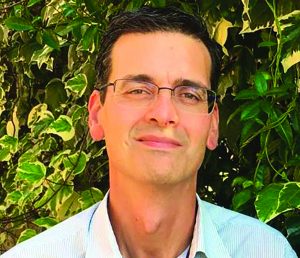
DR RUBEN NOGUEIRAS
As a child, I loved being with my friends and playing basketball. In terms of school subjects, biology was my favourite by far.
I spent extra hours in the lab during my degree. Then I did my master’s and loved the lab work – and decided to become a scientist.
Any successful scientist needs three qualities. Motivation (because science can be frustrating), perseverance (because hard work is essential, no matter how talented you might be), and the ability to choose the right environment to work in (because being part of a good team is vital).
Patience enables me to overcome challenges. It allows scientists to spend time looking for new solutions to old problems.
Many aspects of my career are rewarding. I enjoy it when my colleagues find my work interesting, but I love to see the career progression of former students.
Convincing reviewers and panels can be challenging. Part of a scientist’s work is explaining why your work deserves funding more than many other excellent proposals.
I am proud of securing an ERC Starting Grant, and becoming part of the Synergy Grant was pleasing. Contributing to our understanding of how the brain and peripheral organs are communicating is something I am very proud of.
Enjoy what you do. It is so important to get up each morning and want to go to the lab. Such a mindset will help you throughout your career.
Many experiments do not work. The important thing is to realise that and to keep going. Thankfully, Vincent and Markus make working together fun, so we can overcome any challenges we face.

DR VINCENT PREVOT
Living in Perú as a child, I raised caterpillars and watched them become butterflies. When I was ten, I collected scorpions and insects with my father in the Andes. At 14, with very permissive parents, I built a zoo at home with snakes, turtles, geckos, scorpions, piranhas, salt-water fishes, a ferret and a dog! I was breeding snakes and became a member of the French Herpetology Society at the age of 16. With my interest in breeding reptiles and the obstacles that often arise, I wanted to understand the mechanisms that control how animals reproduce and became fascinated with neuroendocrinology.
Passion for my subject, perseverance, open-mindedness, willingness to question dogma and acceptance of the fact that I do not know everything have made me successful. Surrounding myself with competent and well-disposed people who possess a strong team spirit has also been key.
It sounds simple, but to overcome obstacles, I sleep on them! I usually find that the solution presents itself in the morning.
I practise martial arts, avoid talking science at night with my family, and engage in constructive activities like gardening or doing odd jobs around the house.
I am proud of having been able to make real contributions to our understanding of how the brain controls reproduction and metabolism. I am also proud of having been able to build a top-notch laboratory and an ERC Synergy consortium with internationally renowned scientists and a real spirit of teamwork.
THE TEAM’S TOP TIPS
01 Try your best to develop a passion for something. I have always been curious about biology and it has helped me enormously throughout my career.
02 Taking courses in your native language can be a big help. So much of scientific work relies on effective communication and taking some language classes will certainly help with that.
03 History is another important subject to consider studying – even if only in your spare time. It can help put things into context, which is very important within science.
Do you have a question for Vincent, Ruben or Markus?
Write it in the comments box below and Vincent, Ruben or Markus will get back to you. (Remember, researchers are very busy people, so you may have to wait a few days.)

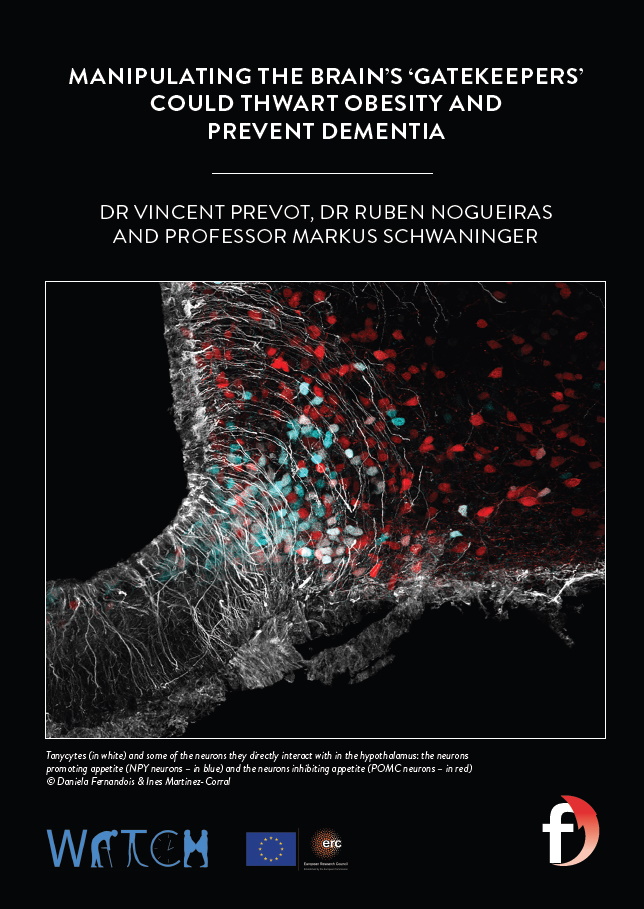
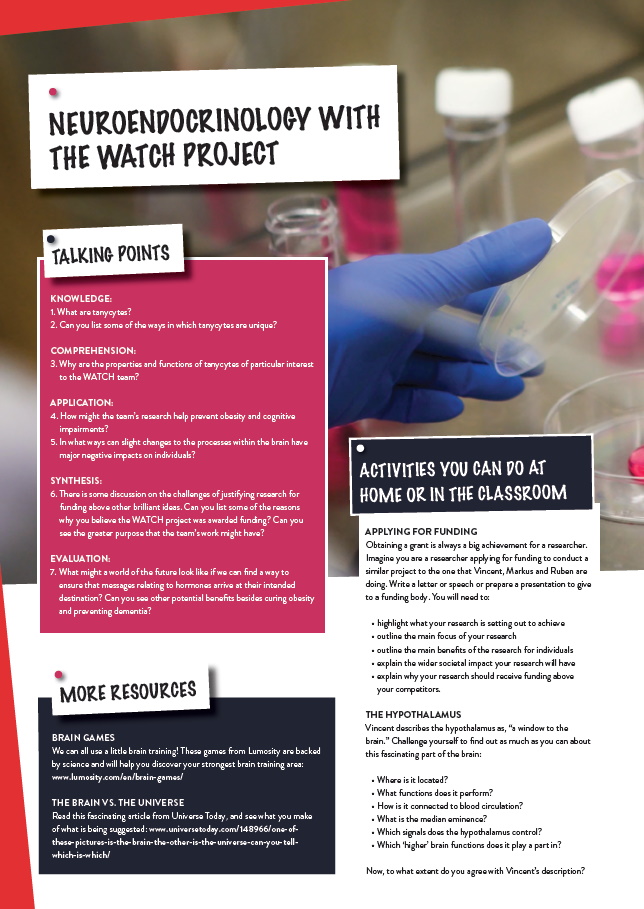
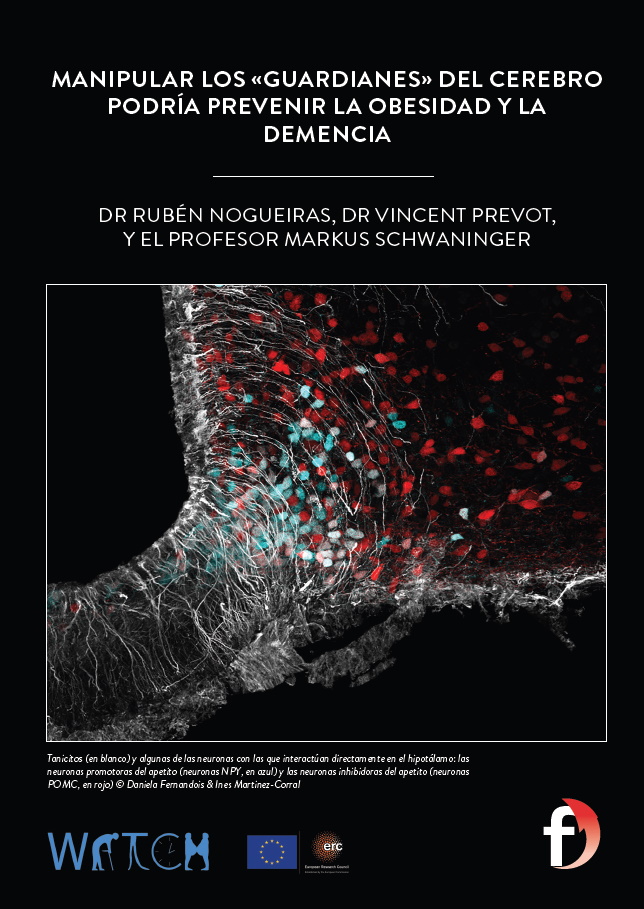
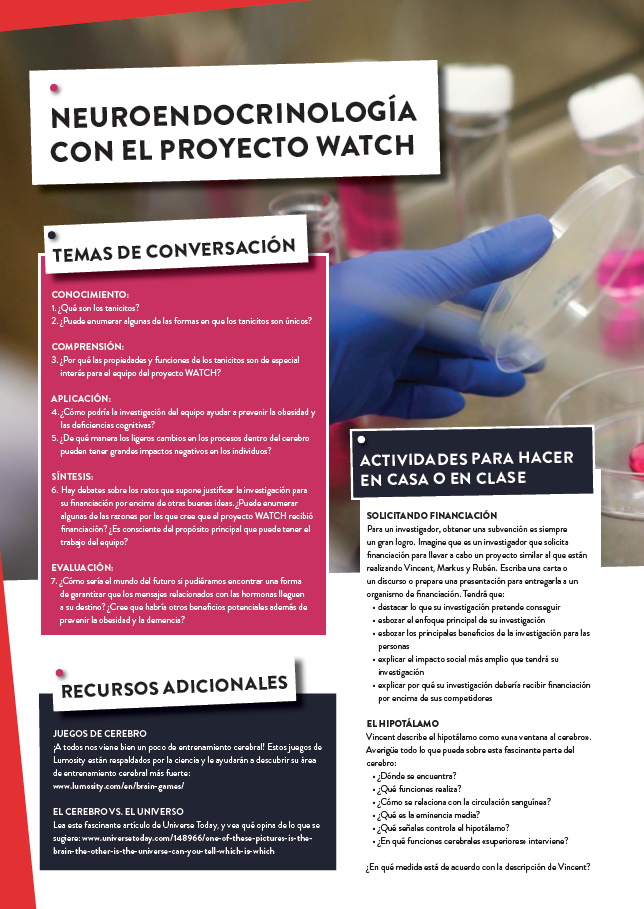
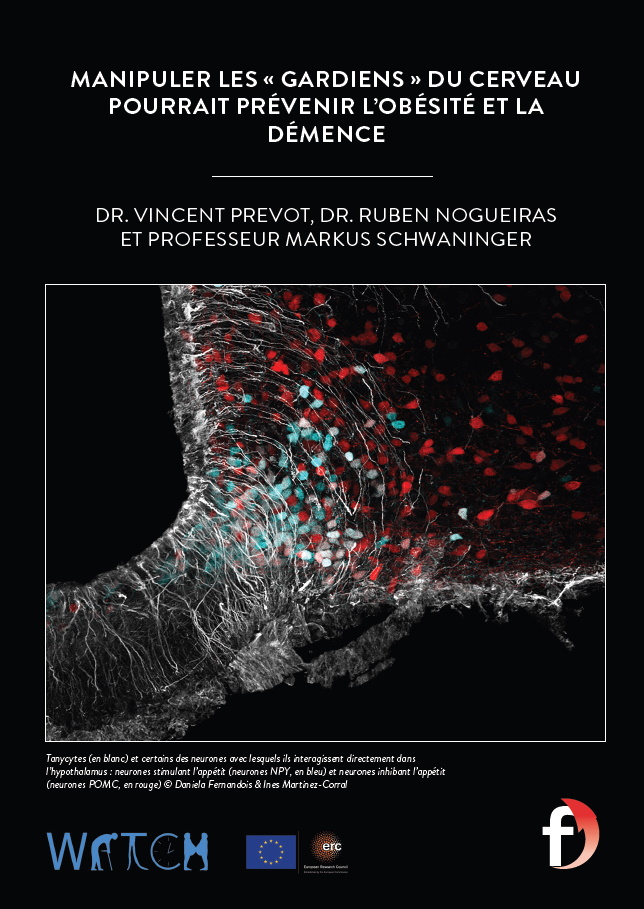


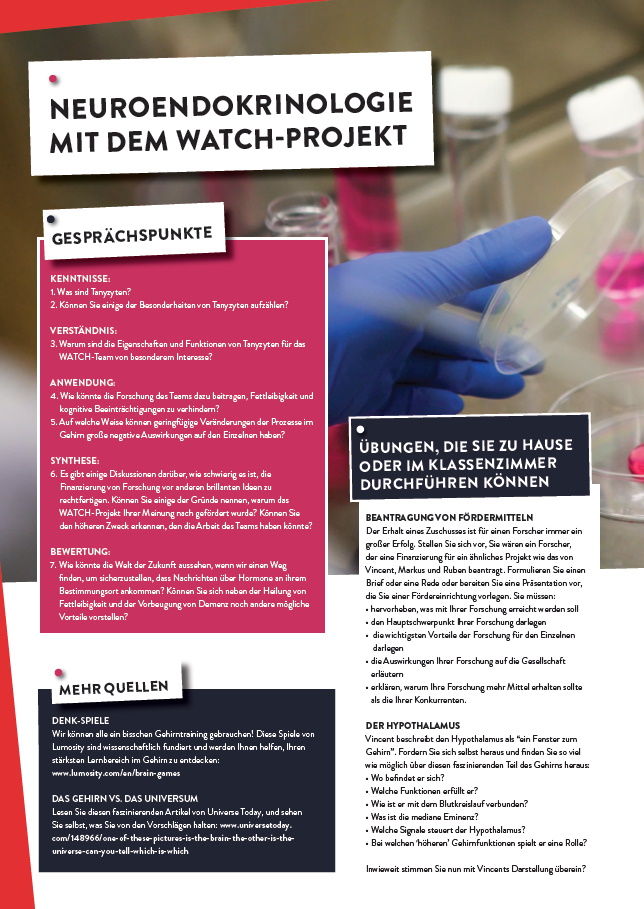

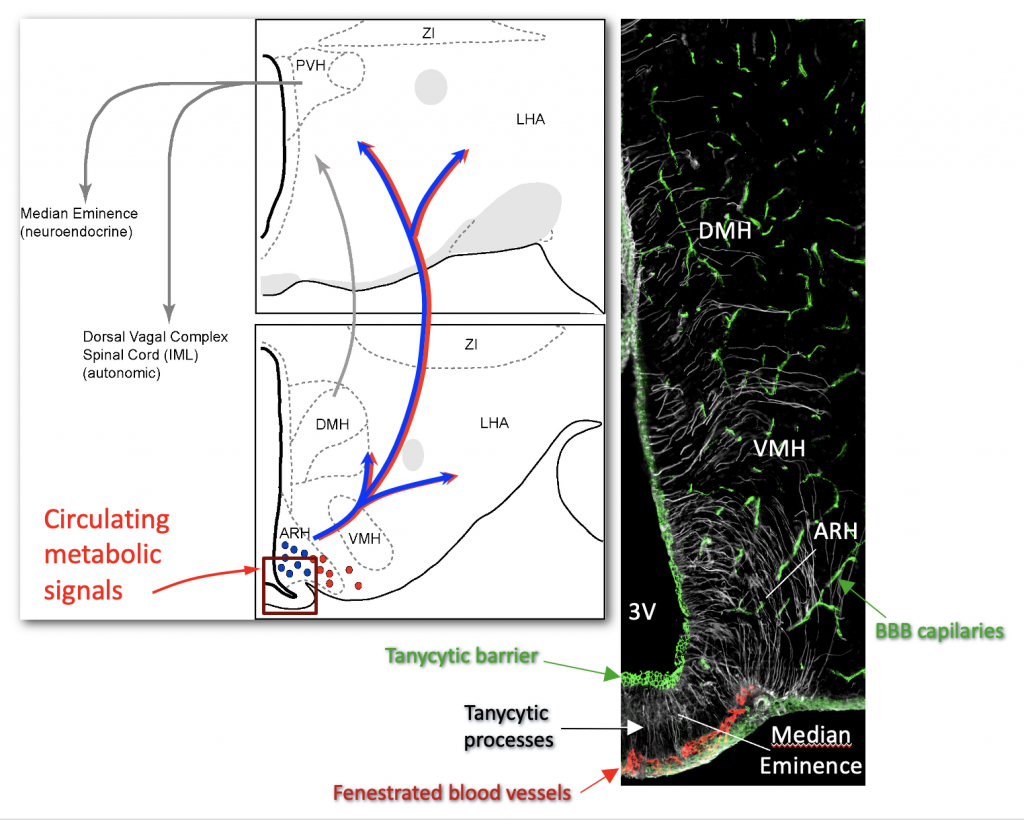
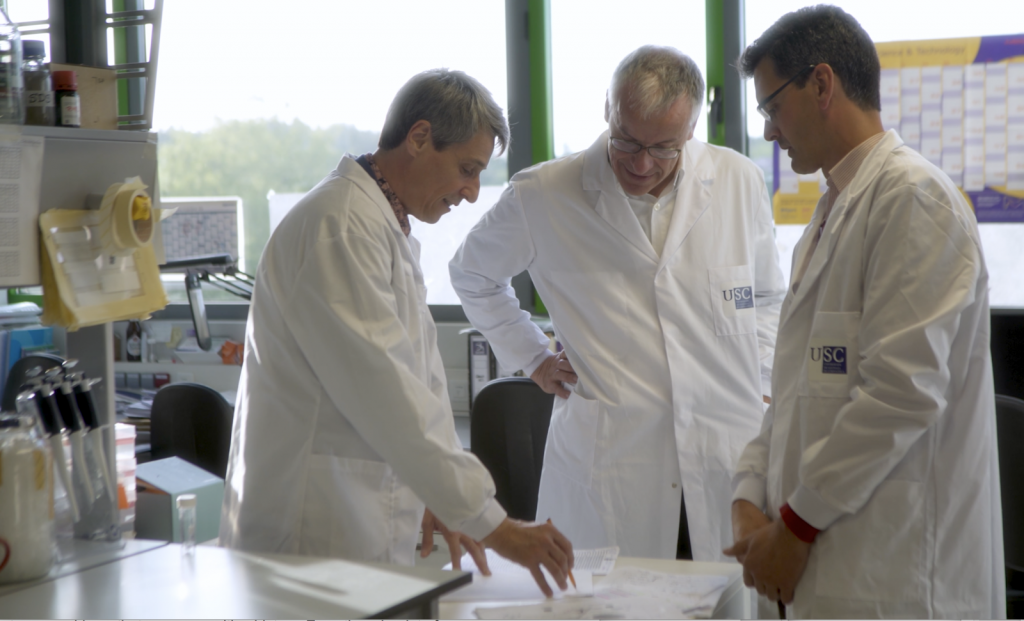
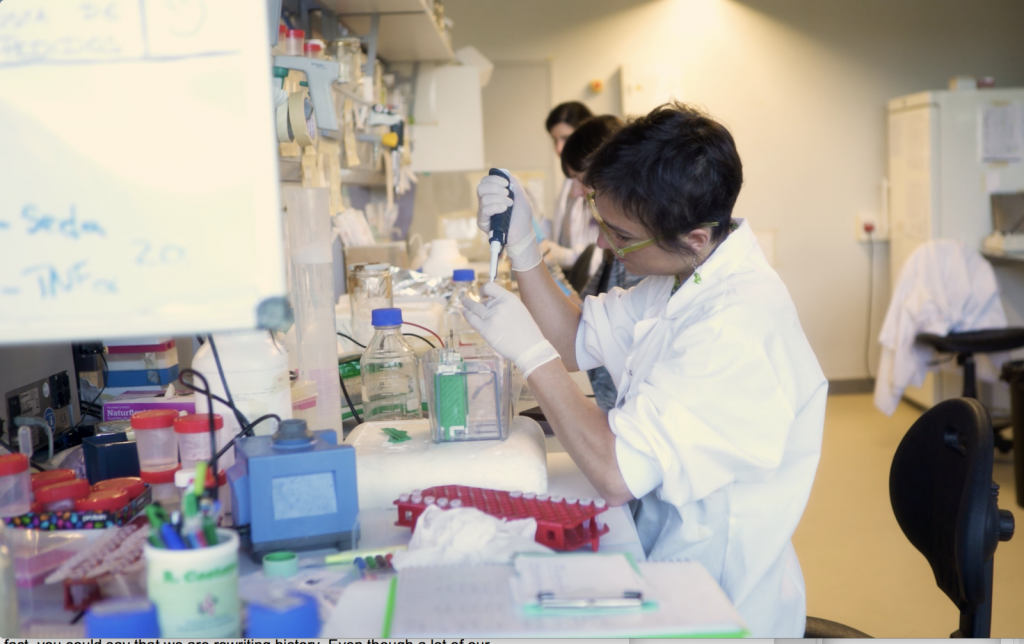
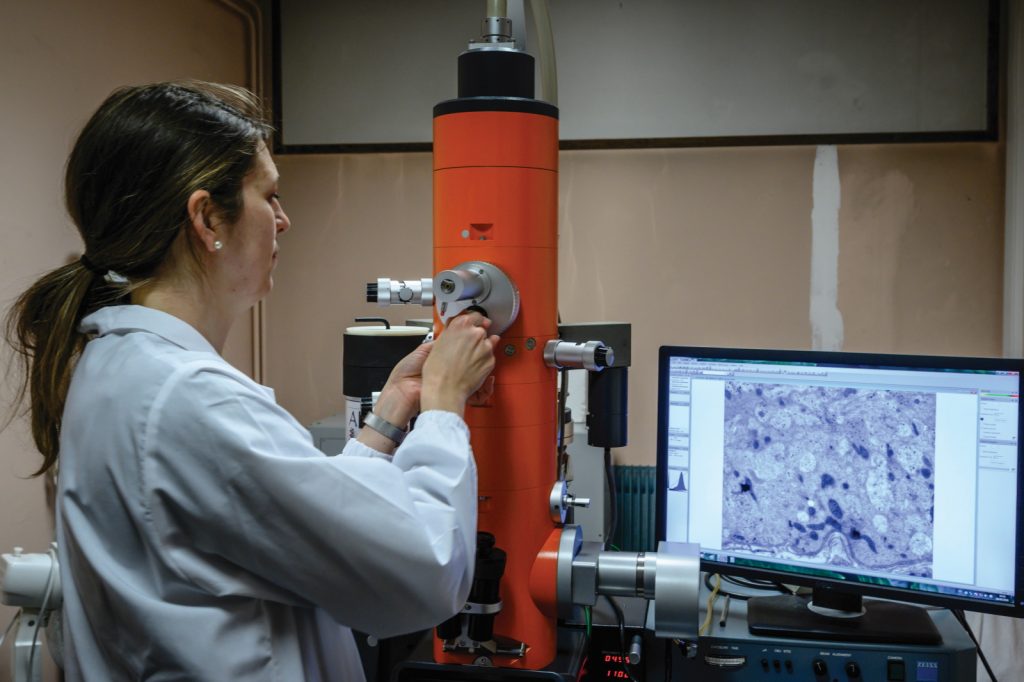
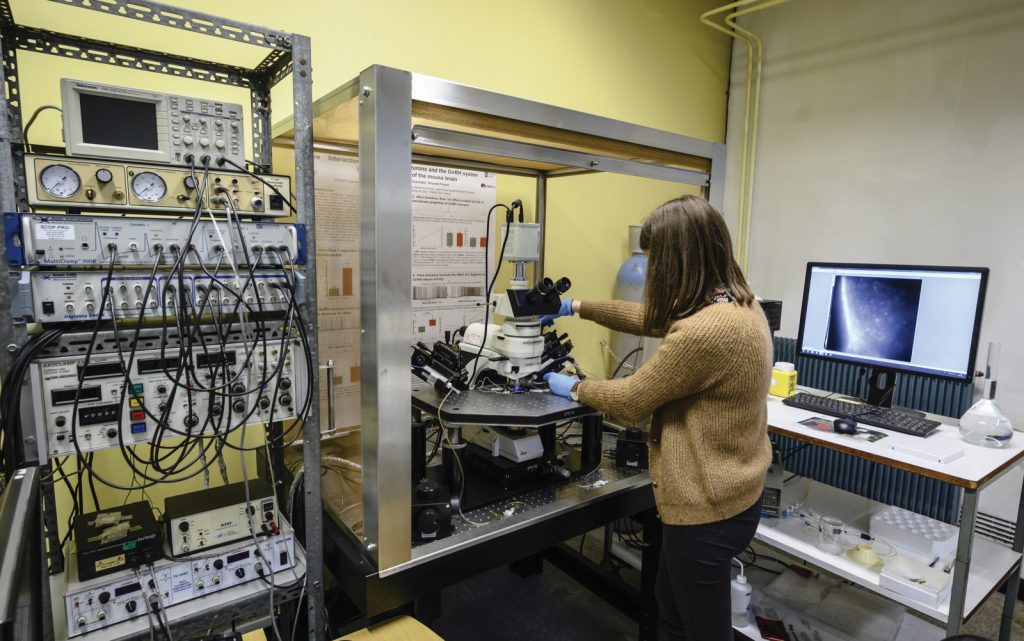
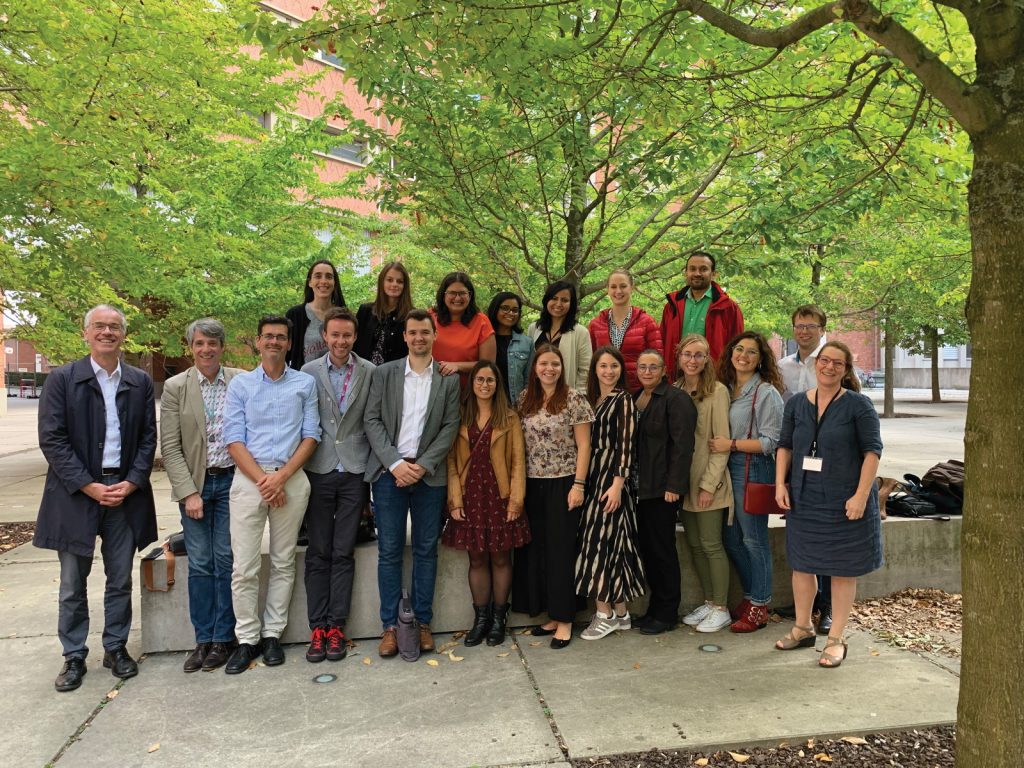








I read your article with great interest, and I wondered whether you might be able to guide me to some suitable scientific papers?
I am a 55-year old male living in the UK. Over the last 10 years or so, I have developed a hypersensitivity to a few artificial fragrances, most commonly the fragrances that are now frequently added to household washing detergents. (Unfortunately, due to lax EU and UK law, I cannot precisely ascertain which chemicals I have a bad reaction to.)
My symptoms are increasing headaches and brain fog. Within ten minutes, I struggle to articulate simple sentences, and I’m pretty sure that I would be seriously ill within an hour. When I remove the fragrances from my environment, my headaches gradually dissipate over a few hours.
As a consequence, I find crowded spaces very difficult – trains and buses are troublesome, planes and theatres are almost impossible for me. This is a major life-limiting problem for me.
Why am I telling you this? My symptoms strongly suggest inflammation in the brain, excess nitric oxide, and a leaky blood-brain barrier. I have a wealth of evidence that my symptoms are relatively common, yet I have so far seen very little hard scientific study of this problem. There is some discussion of MCS (multiple chemical sensitivity) but nothing that seems to describe exactly the brain inflammation that I suffer from.
My doctors in the UK haven’t been able to help, partly because there are no outwardly visible symptoms that they can measure and quantify, but probably also because they honestly don’t know much about it either.
If any of my diagnoses above sound familiar, I’d be really grateful if you have any pointers to appropriate scientific papers.
Sorry for using up your valuable time!
Matthew